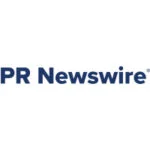Nationwide Home Vacancy Rate at 1.3 Percent for More than Three Years; Proportion of Zombie Homes Rose Year-Over-Year
IRVINE, Calif., May 29, 2025 -- ATTOM, a leading curator of land, property data, and real estate analytics, today released its second-quarter 2025 Vacant Property and Zombie Foreclosure Report showing that 1.4 million (1,382,480) residential properties, about 1.3 percent of all homes in the United States, are vacant. The latest data marks the thirteenth consecutive quarter that the vacancy rate has hovered around 1.3 percent.
The report analyzes publicly recorded real estate data collected by ATTOM — including foreclosure status, equity and owner-occupancy status — matched against monthly updated vacancy data. (See full methodology below).
ATTOM's analysis shows that 222,358 properties were in the foreclosure process during the second quarter of 2025, up 4.8 percent from the first quarter of the year but down 6.3 percent year-over-year. Prior to this latest increase, the number of properties in foreclosure had gone down in each of the previous five quarters.
In the second quarter, 7,329 of those pre-foreclosure properties, 3.3 percent, were "zombie" properties, meaning they had been abandoned by their owners and sat vacant during the foreclosure process. The proportion of pre-foreclosure homes that are vacant is essentially the same as the first quarter of 2025 but up slightly from 2.9 percent during the same period last year.
Zombie properties, which can fall into disrepair and negatively impact property values in a neighborhood, are seen as a sign of an unhealthy housing market and economy. The low rate of zombie properties—only one in every 14,207 homes in the U.S. in the second quarter of 2025—is indicative of the strength of the post-pandemic housing market.
"Thankfully, we're not seeing a lot of homes sitting vacant due to pending foreclosures, which is good for families, neighborhoods, and the market," said Rob Barber, CEO of ATTOM. "However, foreclosure filings have shown a recent uptick—with April seeing a 14 percent increase compared to the same month last year."
"So far, buyers seem to be scooping up these repossessed homes relatively quickly, so they aren't sitting empty," Barber added. "Nobody wants to see a return to the days of the 2008 housing crisis when vacant, blighted homes were common in many parts of the country."
Small statewide shifts in numbers of zombie homes
The number of zombie properties increased quarter-over-quarter in 30 states and the District of Columbia, but mostly by small amounts. The changes were also relatively small in the 19 states that saw their number of zombie properties fall.
Year-over-year, the biggest percent increases in states that had at least 50 zombie homes were in North Carolina (52.5 percent more zombie properties, from 59 in the second quarter of 2024 to 90 in the second quarter of 2025), Iowa (up 52.1 percent, from 71 to 108), Texas (up 51.9 percent from 162 to 246), South Carolina (up 43.8 percent from 64 to 92), and Kansas (up 29 percent, from 69 to 89)
The biggest yearly decreases among states with at least 50 zombie homes in the second quarter of 2024 were Massachusetts (down 48.7 percent, from 76 to 39), Maryland (down 22.1 percent, from 86 to 67), New Jersey (down 17.6 percent, from 239 to 197), California (down 8.9 percent, from 269 to 245), and Illinois (down 8.8 percent, from 724 to 660).
Highest vacancy rates in the South, lowest in the Northeast
The vacancy rate for residential properties in the U.S. has remained steady around 1.3 percent for thirteen consecutive quarters.
The states with the highest home vacancy rates in the second quarter of 2025 were Oklahoma (2.4 percent), Kansas (2.3 percent), Alabama (2.2 percent), Missouri (2.2 percent), and West Virginia (2.1 percent).
The states with the lowest home vacancy rates in the most recent quarter were New Hampshire (0.3 percent), Vermont (0.4 percent), New Jersey (0.5 percent), Idaho (0.5 percent), and Connecticut (0.5 percent).
Most large metro areas have zombie home rates below national rate
About 55 percent (76) of the 138 metropolitan statistical areas in our analysis that had at least 100,000 residential properties and at least 100 properties in pre-foreclosure during the second quarter of 2025 had zombie foreclosure rates below the national rate of 3.3 percent.
The metro areas with the highest proportion of pre-foreclosure homes that were vacant were Wichita, KS (12.1 percent); Peoria, IL (11.8 percent); Toledo, OH (10.2 percent); Cedar Rapids, IA (10.2 percent); and Cleveland, OH (10 percent).
The metro areas with the lowest proportion of zombie foreclosures were Barnstable, MA (0 percent); Atlantic City, NJ (0.2 percent); Provo, UT (0.3 percent); Trenton, NJ (0.5 percent); and Stockton, CA (0.6 percent).
Investor and bank owned homes see higher vacancy rates
There were 24.8 million investor-owned properties in our analysis of second quarter 2025 home data, with a nationwide vacancy rate of 3.5 percent.
The states with the highest investor-owned vacancy rates were Indiana (7.3 percent), Illinois (6.2 percent), Alabama (6 percent), Oklahoma (6 percent), and Ohio (5.8 percent)
The states with the lowest investor-owned vacancy rates were New Hampshire (0.9 percent), Vermont (1 percent), Idaho (1.2 percent), Utah (1.5 percent), and North Dakota (1.6 percent).
A third of zip codes have high zombie home rates
About 36 percent (781) of the 2,166 zip codes in ATTOM's analysis that had at least 25 properties in pre-foreclosure during the second quarter of 2025 had zombie foreclosure rates above the national rate of 3.3 percent. While in 42 percent (903) of those zip codes, there were no zombie foreclosures.
The zip codes with the highest zombie foreclosure rates were 61605 in Peoria, IL (51.9 percent); 44108 in Cleveland, OH (42.2 percent); 61603 in Peoria, IL (34.6 percent), 32118 in Deltona, FL (34.2 percent), and 33708 in Tampa, FL (33.3 percent).
Report Methodology
ATTOM analyzed county tax assessor data for 104.1 million residential properties for vacancy, broken down by foreclosure status and owner-occupancy status in the second quarter of 2025. Only metropolitan statistical areas with at least 100,000 residential properties, counties with at least 50,000 residential properties and zip codes with at least 1,000 residential properties were included in the analysis.
About ATTOM
ATTOM powers innovation across industries with premium property data and analytics covering 158 million U.S. properties—99% of the population. Our multi-sourced real estate data includes property tax, deed, mortgage, foreclosure, environmental risk, natural hazard, neighborhood and geospatial boundary information, all validated through a rigorous 20-step process and linked by a unique ATTOM ID.
From flexible delivery solutions—such as Property Data APIs, Bulk File Licenses, ATTOM Cloud, Real Estate Market Trends—to AI-Ready datasets, ATTOM fuels smarter decision-making across industries including real estate, mortgage, insurance, government, and more.
This News is brought to you by Qube Mark, your trusted source for the latest updates and insights in marketing technology. Stay tuned for more groundbreaking innovations in the world of technology.









